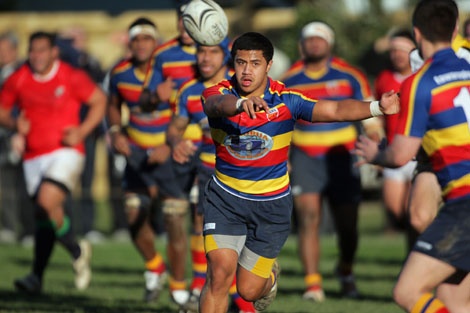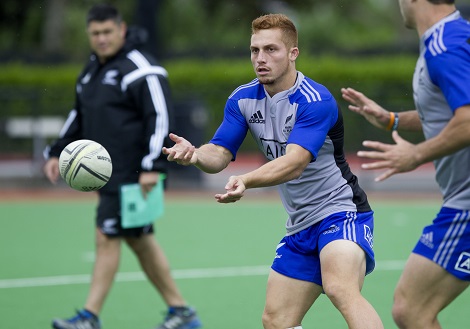- Rugby Toolbox
- Resources & Education
- Learn more
- Articles
- Snook on Coaching
- Keeping the Ball Alive Out Wide
- Ruck & Run Drill
- Playing Philosophy – Ruck & Run Coaching Components
- Playing Philosophy – Spread the Forwards
- Playing Philosophy – A forward behind the ruck
- Playing Philosophy – Ruck & Run
- Playing Philosophy – An idea!
- The Breakdown
- Building Positivity [3]
- Building Positivity [2]
- Building Positivity
- Fitness and Game Related Activities
- Getting the Head Working
- Missiles are Dangerous
- Use of Video
- Winger Attacking Outside First-Five
- Player Profiling
- Selection
- Fitness Away from the Team Session
- Playing Philosophy (Pre season Prep)
- Coaching the Coaches
- The Rugby Coordinator and Pre-Season Preparation
- Why Not Use Tap Penalties More Often?
- Why Kick the Ball Down the Middle of the Field?
- Defending the 5 Metre Lineout Drive
- Scoring from the 5 Metre Lineout
- What are the Kicking Team Aiming to Achieve from Halfway Restart
- Should We Practice Scoring Tries?
- Team Culture
- Looking After Your Players
- Coach Survival Tips
- Under 11/13 – Backline Defence
- Under 11/13 – Ruck Defence
- Under 11/13 – Back Attack
- Under 13 – The Counter Attack
- Under 11/13 – The Maul
- Under 11/13 – Lineouts
- Under 11/13 – Decision Making
- Under 11/13 – Support Play
- Under 11/13 – Dive Pass and More
- Under 11/13 – Drop & Grubber Kick /Highball Catch
- Under 11/13 – Front on Tackling
- Under 11/13 – Contact – Getting Up – The Ruck
- Under 11/13 – The Coaching Session
- Under 8/10 – Using Space
- Under 8/10 – Kicking
- Under 8/10 – Contact and Picking Up the Ball
- U8/U10 Draw & Pass and Sidestep
- Under 8/10 – The Tackle
- Under 8/10 – The Coaching Session
- Under 7 – Test Your Coaching – Support Play
- Tap Pass and Swerve U7
- Ball Familiarisation; Passing & Receiving
- Activities for the Non-Contact Tackle
- Under 7 – The Coaching Session
- Coaching Teenagers – After the Ruck
- Coaching Teenagers – The Practice Session
- Coaching Teenagers – Best Practice
- Coaching Kids – Best Practice
- Plays from a Tap Penalty
- Running Plays from a 5 Man Lineout
- Driving Plays from a 5 Man Lineout
- Strike Plays at the End of the Lineout
- Back Strike Plays at the Lineout
- Wide Strike at the Scrum (2)
- Wide Strike at the Scrum
- Midfield Attack at the Scrum
- No 8 Plays at the Scrum (2)
- No 8 Plays at the Scrum
- The Cut Out Pass
- Skills to Penetrate (2)
- Skills to Penetrate
- Movements to Penetrate
- Patterns to Penetrate
- Contact and Continuity
- Keeping the Ball Alive Out Wide
- Pre Season Support Activities
- Checklist
- Understanding the game
- The Playing Philosophy
- The Lineout
- Overview
- Team Profile
- Start Now!
- Backrow
- Nine and Ten
- Rugby-related Fitness Activities
- The Psychological Edge
- Open Field Play
- Key Performance Indicators
- Improving Team Performance
- Backline Attack Concepts
- Tactics at Phase Play
- Playing Philosophy
- The ‘Stop Focus’
- Kick Attack
- Clearing the 22
- Wide Attack at Phase
- Player Focus
- Scrum Preparation
- Lineout Preparation
- Back Attack Preparation
- Sevens Preparation
- Sevens Kick Offs
- Sevens Scrum and Lineout
- Sevens Attack Patterns
- Sevens Defence
- 7's Selection and Game Planning
- Coaching and Leadership
- How the Game Evolves
- Changing Within the Game
- Learning from the Television.
- Using Tap Penalties Wisely
- Defence Drills
- Defence Drills for Tight Five
- Team Defence and TUB’ing
- Establishing Patterns from the Ruck
- Structured Phase Play
- Structuring Phase Play on the Run
- Coaching Roles
- Structuring a Close in Tackling/Defensive Session
- Coaching in Threes
- Attacking Back Play
- Kick Off Chase
- Wrap Around Back Plays
- Lineout Plans
- Looking and Learning
- Motivating Your Players
- Scrum Attack
- Refocusing the Team
- Monitoring the Progress
- Learning the Game
- Playing to the Laws
- Small is OK
- Decisions After the Tackle
- Improving Your Coaching
- Food for Thought
- More Food for Thought
- Passing & Catching
- How Ireland Nearly Beat the All Blacks
- The Progressive Coach
- Try Something New
- Encouraging Excitement
- The Mental Approach
- Where to Start
- Being the Best You Can Be
- Off the Ball Decisions
- Lineouts Difficult to Master
- Decisions on the Run
- Rucking and Rolling
- A Successful Approach
- Gaining Clarity
- Manipulation vs Physicality
- Beating the Drift
- To Ruck or Not to Ruck
- Stopping the Lineout Drive
- Fine Tuning the Planning
- It's a Running Game
- RugbySmart 2015
- Using the Shoulders
- Loosehead Prop / Tighthead Prop
- Position Specific – Hooker
- Position Specific – Lock
- Position Specific – Blindside Flanker
- Position Specific – Openside Flanker
- Position Specific – No 8
- Position Specific – Halfback
- Position Specific – First Five Eighth
- Position Specific – Second Five Eighth
- Position Specific – Centre Three-quarter
- Position Specific – Wing
- Position Specific – Fullback
Keeping the Ball Alive Out Wide

At practically every level of the game once the ball gets out wide in to the 15 metre channel the player 'has a go', gets tackled, and a ruck takes place. Good things can happen if the ball is won quickly and attack players are in position, but surely it would be better to formulate a policy where a ruck is not the first option but only an option that takes place once it is forced upon the attackers.
The object of the exercise must be to get in behind the defenders, keep the ball alive and really go for it with good support play and keep heading forward away from the defence.
The amount of space required for individuals will depend on the skill ability of the team you are coaching.
Step 1: Play a Game. You could start with a relatively structured set up similar to what you would find in a back attack or phase attack where the ball has been passed wide.
In a 15m x 15m grid start with a 3 v 2 with the first attacker receiving the ball on the 15m line. The object of the exercise is to score without any of the attacking players being tackled.
As the game develops the scenario could be a 4 v 3 with the third defender coming across on the cover from just behind the initial attacker.
Depending on how successful the attack is and the quality of the players more numbers could be introduced on each side.
Once the numbers start getting up then the attack must pass in the tackle to maintain the continuity. Prior to that they are trying to make space and pass before the tackle.
Step 2: Tactical Feedback. Discuss with the players (and those observing) what they have seen and what they might do differently to make the play more successful.
The coach might prompt with some of the following questions:
What can the inside players do to ensure the outside player has sufficient space to beat the defender in a 1 v 1? (Receiving the ball running forward rather than across is a key component. Where does he start his run etc.?)
What can the outside attacker do if he is confronted by a defender and has run out of space?
How can the support players help this scenario?
What is important after the pass has been made?
What sort of things can the ball carrier do to ensure he has threatened the defence before passing?
Could more quick passing take place?
Step 3: Skills Feedback: There are individual and mini unit skills that need to be practiced to make this concept successful.
Ask the players what they believe these skills are. Who needs to practice which skills?
The coach and players should be talking about angles of run with the ball and before receiving the ball;
changes of pace on to the ball and on receiving the ball;
support roles – positioning/pace on to the ball; passing under pressure;
maintaining depth; passing before the contact where possible;
scanning for a space to accelerate in to;
stepping and accelerating; swerving;
what is the best way to keep moving forward?
Remember: it is the coaches job to pose the problem and guide the discussion if necessary. He must have an idea of what he is looking for so that the activity can keep improving. Then he needs to be able to offer some technical advice to ensure that the players improve. This is what coaching is about.
What the coach wants in this activity is to ensure that when the ball goes wide his player is not pushed over the sideline or a slow ruck takes place. He wants his team to get in behind the defence and go forward as quickly as possible to score.
The players will enjoy a game like this.